How to Make a Subway Map with John Tauranac
Hear from an author and map designer who has been creating maps of the NYC subway, officially and unofficially, for over forty years!


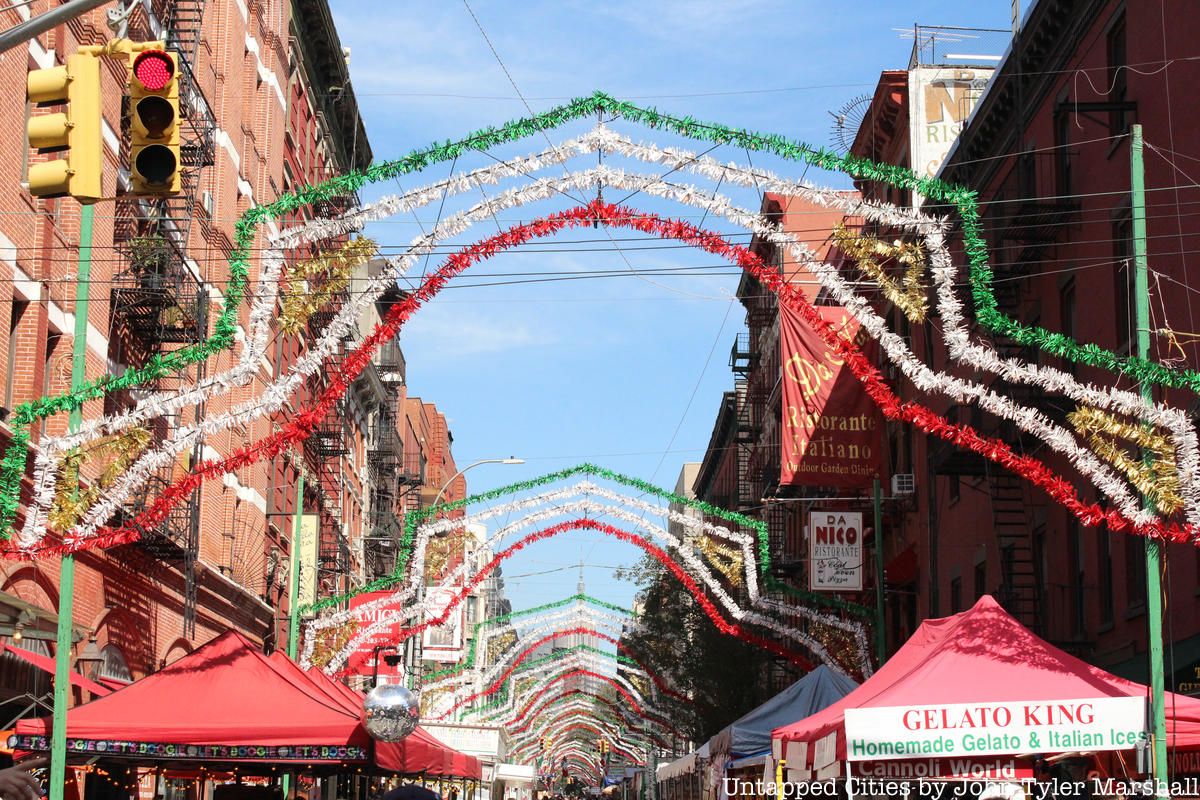
As Bill Tonelli of New York Magazine wrote in 2004, “Once, Little Italy was like an insular Neapolitan village recreated on these shores, with its own language, customs, and financial and cultural institutions.” Though never housing the largest Italian-American community in New York City — with this title held by East Harlem — Little Italy in Manhattan served as one of the primary homes for Italian immigrants new to New York during the 20th century. Little Italy would also became a hot spot for organized crime, with several of the city’s biggest operators using the neighborhood for their headquarters. During the height of their power, reigning mafia families often fought for control over the area’s businesses, with owners being forced to pay a protection fee to the mob for their shops to remain untouched.
However, in recent years, the neighborhood has begun to shrink, losing both residents and territory to other areas of the city. Even so, what remains of the neighborhood continues to be a haven for Italian-American culture and cuisine, offering much to discover. Read to learn more about what makes Little Italy such a fascinating and integral part of New York City’s history.
During the early 1900s, Little Italy was a vibrant Italian-American community stretching across a 30-block section of the Lower East Side. The neighborhood served as a haven for Italian culture and cuisine, while also distinctly partitioned along regional loyalties. Sicilians could primarily be found on Elizabeth Street, Northern Italians on Bleecker Street, and the Genovese on Baxter Street. In the late 1930s, Little Italy was 98 percent Italian.
However, this all began to change after World War II, when many of the area’s families moved away to the other boroughs in search of more space and the area’s demographics began to shift. By 2000, only 1,211 residents claimed to have Italian ancestry, making up just 8.25 percent of the community — a sharp contrast to the population of nearby Chinatown, where 81 percent of residents were of Chinese descent. This trend only continued further, with a 2010 U.S. Community Survey showing that none of the neighborhood’s current residents were born in Italy and only five percent were Italian-American. Moreover, since the late 1960s, when immigration from China was reinstated, Chinatown’s traditional border along Canal Street slowly inched into Little Italy’s territory, leaving it with just three blocks sequestered around Mulberry Street.
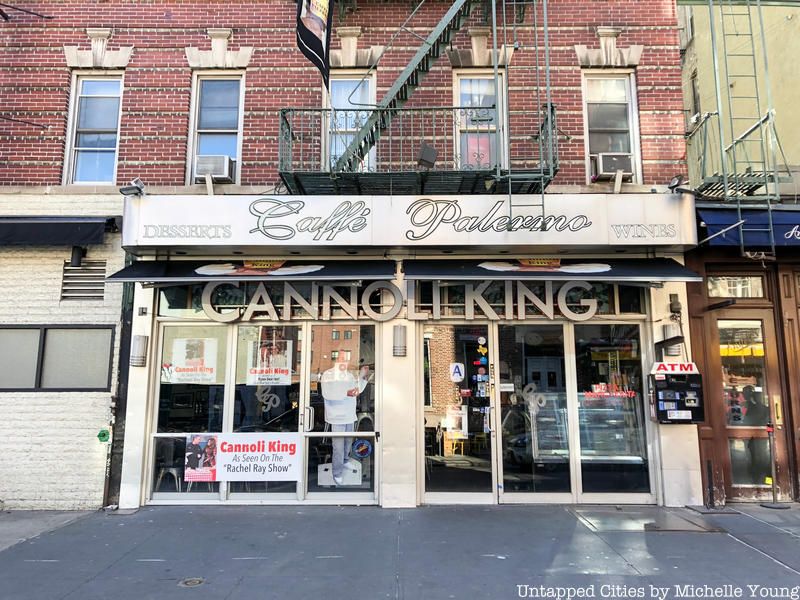
Mulberry Street is one of Lower Manhattan’s principal thoroughfares located between Baxter and Mott Street. Historically the street has long been associated with New York’s Italian-American community, running straight through the heart of what remains of Little Italy. Listed on maps as early as 1755, Mulberry Street’s bend was strategically placed to avoid the wetlands surrounding the Collect Pond — which has since become a local park. During the American Revolution, the street came to be known as “Slaughter-house Street” after the slaughterhouse owned by Nicholas Bayard. Located on the southwest corner of Mulberry and Bayard Streets, the slaughterhouse was ordered by the city to be moved to Corlear’s Hook in the summer of 1784.
Mulberry Street would also serve as one of the borders for Five Points, a neighborhood known for being a densely populated, disease-ridden, and crime-infested slum. In the Prohibition Era, the corner of Kenmare and Mulberry Street was known as the Curb Exchange given its position as the perfect spot to buy alcohol illegally. Additionally, many of Little Italy’s crime bosses would frequent Umberto’s Clam House, located at 132 Mulberry. The restaurant would become the scene of the murder of New York gangster Joe Gallo, who was shot five times hours after celebrating his 43rd birthday. Today, Mulberry Street houses a number of Italian restaurants including Caffé Palermo. Opened in 1973 by the Cannoli King, Baby John, Caffé Palermo has been visited by a number of celebrities, including Danny DeVito, Clint Eastwood, Henry Winkler, and Katie Holmes. Besides going through Little Italy, Mulberry Street also runs through the center of Little Australia, NoHo, and Chinatown.

The Feast of San Gennaro is an annual celebration of Italian-American culture and cuisine centered along Mulberry Street in Little Italy. The festival’s origins date back to September 1926, when a group of immigrants from Naples erected a small chapel on Mulberry Street to house an image in honor of Januarius — Gennaro in Neapolitan Italian — the patron saint of their hometown. Individuals who came to pray to the saint were asked to pin an offering to the ribbon streamers hanging from the statue’s apron. The money gathered from the festivity was then distributed to the poor living in the neighborhood.
Since then, the festival has expanded into an 11-day street fair, featuring food vendors, carnival games, live music, and other attractions. Some of the most popular dishes served at the festival include sausage and peppers and zeppoles. Visitors can watch or take part in a cannoli-eating contest outside the famous Ferrara Bakery & Cafe — one of the oldest bakeries in New York City. On the last Sunday of the feast, after a celebratory mass at the Church of the Most Precious Blood, a Grand Procession takes place — during which a statue of San Gennaro is carried from the church through the streets of Little Italy.
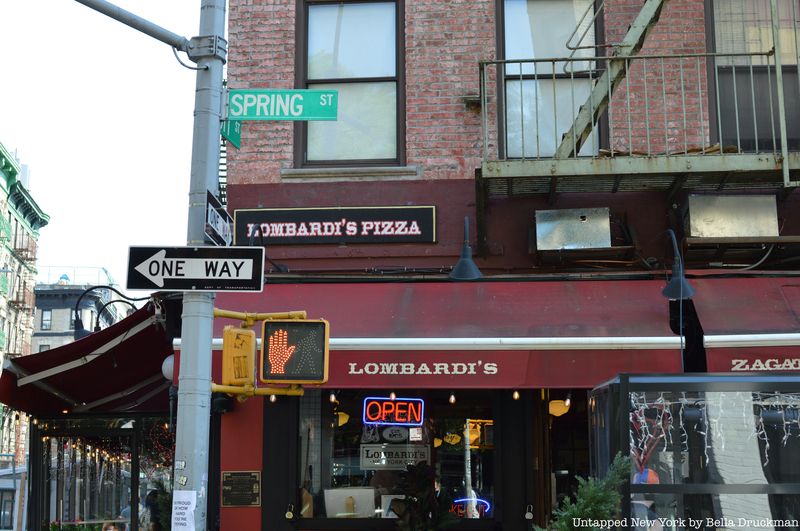
Established in 1905, Lombardi’s Pizzeria has become a staple in the Little Italy community. Lombardi’s was started by Italian immigrant Gennaro Lombardi in 1897 as a small grocery store located at 53 Spring Street. Originally, the store served tomato pies wrapped in paper and tied with a string during lunchtime, designed for the area’s industrial workers. This occurred until 1905, when Lombardi received a license to operate a pizzeria.
According to the Pizza Hall of Fame, Lombardi’s is the first pizzeria ever opened in the United States. However, it is not the oldest continually run pizzeria in the country — it closed for a period of 10 years starting in 1984 due to financial reasons. That title instead belongs to Papa’s Tomato Pie, located in Trenton, New Jersey, which began operations in 1912. The restaurant would reopen in 1994 one block away in its current location at 32 Spring Street thanks to the efforts of Lombardi’s grandson, Gennaro Lombardi III, and his childhood friend John Brescio.
However, over the past few years, there has been controversy as to whether or not the restaurant was actually founded by Lombardi. In 2019, it was revealed that Lombardi’s birth record and naturalization papers showed he only came to the United States in 1904 at the age of 17, classified as a “laborer.” He most likely would have begun as an employee and not the owner of Lombardi’s when it opened just one year later.
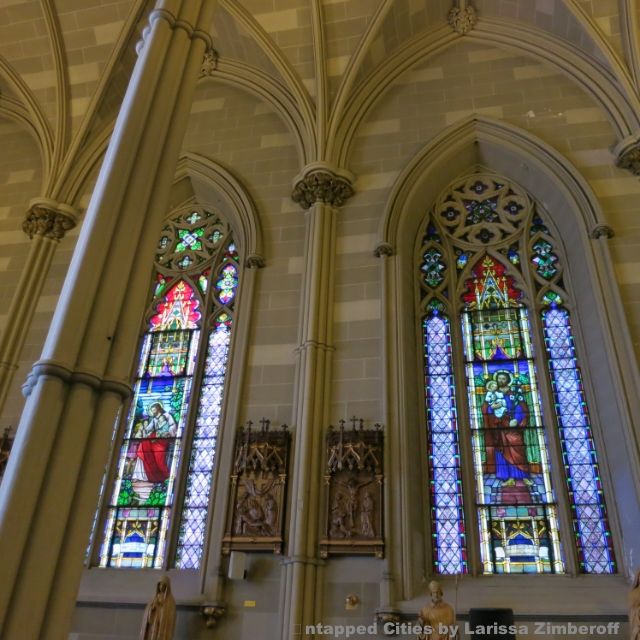
As the original cathedral of the Archdiocese of New York, the Basilica of St. Patrick’s Old Cathedral can trace its roots back to St. Peter’s Church — the first Roman Catholic church in New York City. Located on Barclay Street, Saint Peter’s Church was founded in 1785. By the early 19th century, with New York City’s Catholic population on the rise, Anthony Kholman, a Jesuit rector at the church, proposed that a second sanctuary and cathedral for the first bishop be built. 260 Mulberry Street, the site chosen by Kholman, was located within the second cemetery of St. Peter’s Church, meaning that the graves needed to be relocated before construction could begin.
Built from 1809 to 1815, the Basilica of St. Patrick’s Old Cathedral was designed by Joseph-Francois Mangin in the Gothic Revival style. After opening, the cathedral became the primary burial ground for the Catholic community of New York City. In addition, below the cathedral are a series of crypts— the only catacombs left in Manhattan. Many members of the Catholic faith were enclosed in these brick and cement crypts, belonging largely to wealthy bankers, lawyers, captains of industry, merchants, and even Civil-War generals.
The Basilica of St. Patrick’s Old Cathedral remained the seat of the archdiocese until the current St. Patrick’s Cathedral opened in Midtown in 1879, though the church remains operational today. In 1966, the cathedral was named a New York City landmark and was added to the National Register of Historic Places in 1977. It would later gain its basilica title from Pope Benedict XVI on Saint Patrick’s Day in 2010.
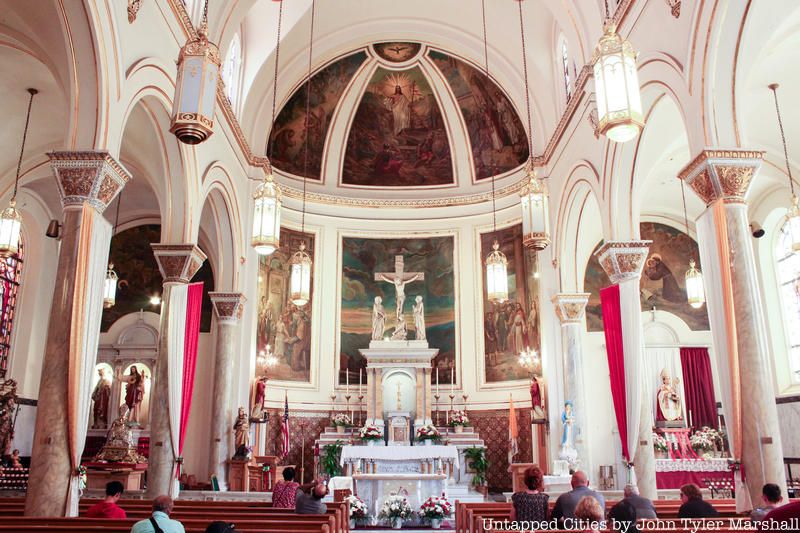
Located at 113 Baxter Street between Canal and Hester streets, the Church of the Most Precious Blood served as a prime place of worship for New York’s growing Italian immigrant community. As waves of Italian immigrants moved to New York City at the turn of the 20th century seeking a better life, they began to congregate in Lower Manhattan. However, these immigrants faced numerous obstacles, often coming to live in overcrowded and unsanitary tenements. Shunned by the rest of the city, they were not allowed to worship in already established sanctuaries. As a result, many took to worshipping in make-shift areas in basements, with one prominent place being in the basement of the Transfiguration Church on Mott Street.
As a means of combating this, the Vatican decreed the establishment of the parish of the Most Precious Blood in 1888. Construction on a church was begun by Scalabrini Fathers in 1891. Though the Scalabrini Order ran out of funds, the project was taken over by the Franciscans, who completed the church building in 1904. Every year during the Feast of San Gennaro, a statue of San Gennaro is taken from its shrine within the church and carried through the streets of Little Italy. Today, the church is home to several religious societies in addition to the Figli di San Gennaro such as the Community of Sant Egidio, San Angelo Society, and Saint Rocco of Potenza Society. Moreover, the church is also home to the Vietnamese Arts and Learning Cultural Center.
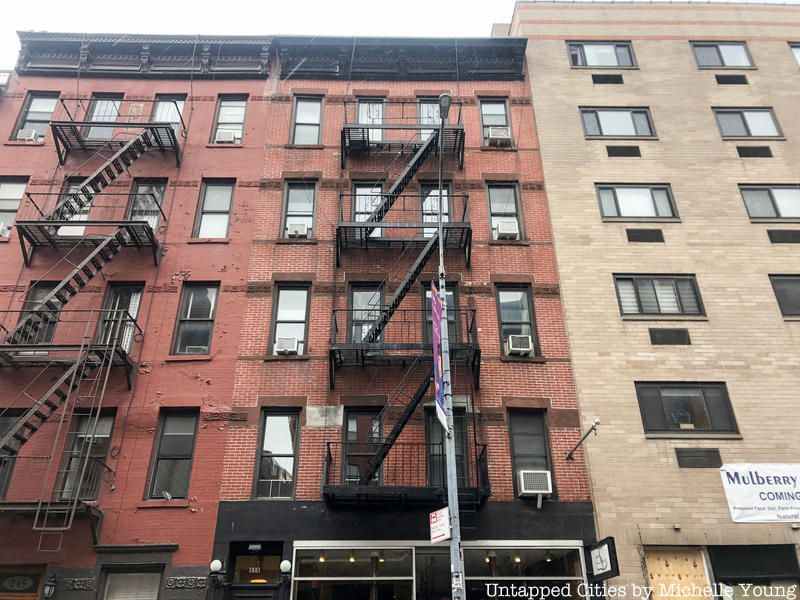
While on the outside it appeared to be a simple espresso bar, the former Ravenite Social Club was at the center of Little Italy’s Mafia operations. The club began operating in 1926 as the Alto Knights Social Club — named after an old street gang during Prohibition. Shortly after, the club went on to become a hangout spot for Lucky Luciano, who was instrumental in the development of the National Crime Syndicate.
The club’s name would later be changed to “The Ravenite” by Carlo Gambino in 1957 as an ode to his favorite poem by Edgar Allen Poe, “The Raven.” Gambino’s influence on the club would be short-lived as he quickly stopped frequenting it after learning it had become the subject of surveillance for the NYPD. Ownership would transfer to Aniello Delacroce, another mobster and underboss in the Gambino family. During the late 1970s and 1980s, the club was primarily used as the headquarters for the Gambino family.
Everything changed around 1990, when the FBI started infiltrating the Italian mafia by using secret electronic surveillance installed in John Gotti’s apartment above the club. Recordings from meetings in the apartment became critical in arresting Gotti in 1992, who would die 12 years later of throat cancer while in prison. After being arrested, Federal Marshals seized the club and sold it. Today, the club’s former location is a shoe store.
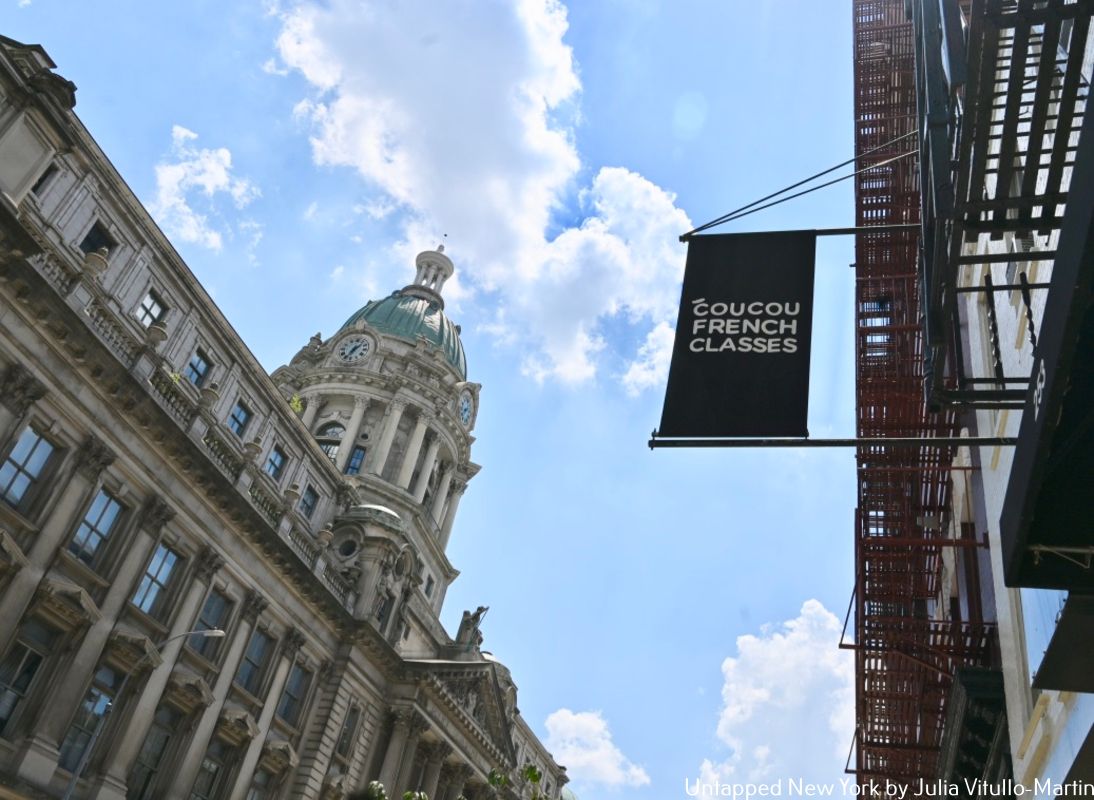
Built from 1905-1909, 240 Centre Street served as the New York City Police Department’s headquarters until 1973. Before 240 Centre Street, the New York City Police Department was housed in an older nearby building on Mulberry Street, where future U.S. President Theodore Roosevelt served as the New York City Police Commissioner. After the consolidation of the five boroughs into the City of Greater New York, the police department needed a larger headquarters and made the move to 240 Centre a few years later. While serving as the police headquarters, the beautiful Beaux-arts style building included a gymnasium, circular radio room, and two basement levels. One level, in particular, had more than 30 6-by-10 foot steel mesh cells with snap-up bunks attached along the walls.
In 1973, New York City’s police headquarters moved one mile away to One Police Plaza, located on Park Row in Civic Center near City Hall and the Brooklyn Bridge. A few years later in 1988, 240 Centre was converted into a luxury coop building by Ehrenkranz Group & Eckstut. Known today as the Police Building Apartments, 240 Centre houses condos— some of which go for as much as $18 million. The building was designated a New York City landmark in 1978 and listed on the National Register of Historic Places in 1980.
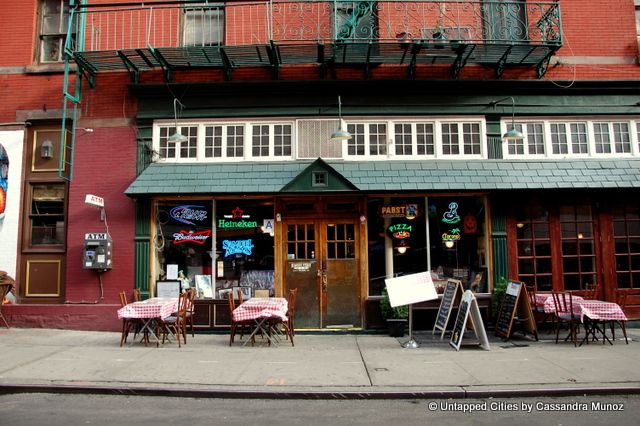
Over the years, Little Italy has been prominently featured in many of the world’s most iconic film and television productions. One such example is Francis Ford Coppola’s three-film series based on Mario Puzo’s 1969 novel The Godfather. The film follows the trials and tribulations of the fictional Italian-American mafia Corleone family. Many of the film’s scenes center around the Corleone family’s daily operations as one of the Five Families of the New York Mafia. Most prominently, St. Patrick’s Old Cathedral served as the setting for the baptism scene in The Godfather Part II.
Another influential film set in Little Italy is Martin Scorsese’s 1973 Mean Streets, which starred Robert De Niro, who also grew up in the area. In addition, Little Italy served as the backdrop for Luc Besson’s 1994 film Leon: The Professional, which starred Jean Reno, Gary Oldman, and Natalie Portman. On television, Little Italy’s Mulberry Street Bar— one of the oldest in the city — has been featured on The Sopranos and Law & Order.
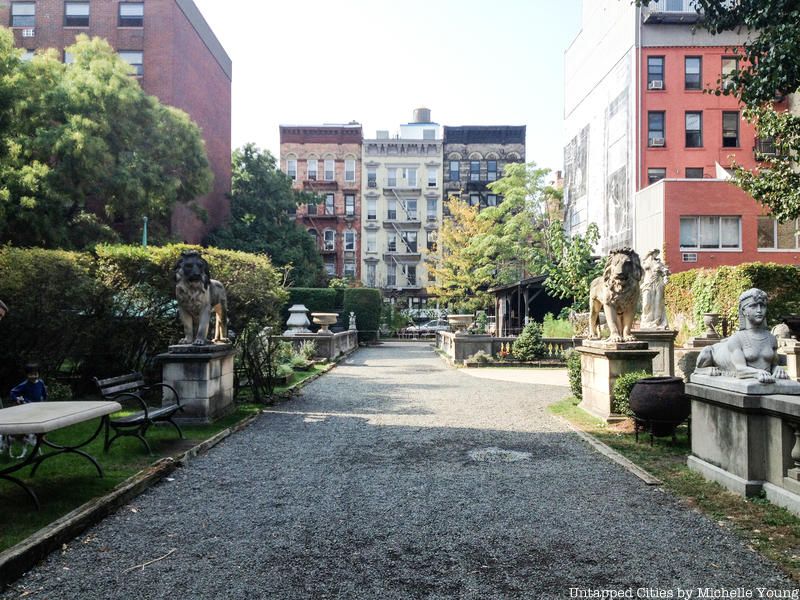
Housing an eclectic array of sculptures and pieces of architectural salvage, the Elizabeth Street Garden is a beautiful urban oasis tucked in Little Italy. The Elizabeth Street Garden was created by gallery owner Allan Reiver in 1991 in an abandoned city-owned lot, becoming a beloved neighborhood staple over the years. Highlights of the garden include a replica of Boy With Thorn (Spinario), a marble sculpture located in the Uffizi Gallery in Florence, Italy, and a multi-colored red, purple, and blue bench with its own “Color Hotline” that can be called to learn more about what each color means to the New York City and Little Italy community. In addition, Elizabeth Street Garden holds remnants of an installation by world-renowned artist JR. Visitors also have the opportunity to pick figs from a tree planted by the garden’s Executive Director Joseph Reiver and his mother.
However, the garden’s future currently remains uncertain. As of September 22, 2021, the Department of Housing Preservation & Development (HPD) has sent out a notice to terminate the lease for the garden. Over the grounds of the garden the city plans to build Haven Green, a development project that will provide 123 affordable housing units for some of New York City’s more than 200,000 low-income senior citizens sitting on New York’s housing waitlist.
Next, check out the Top 10 Secrets Of The Elizabeth Street Garden, located in Little Italy!
Subscribe to our newsletter